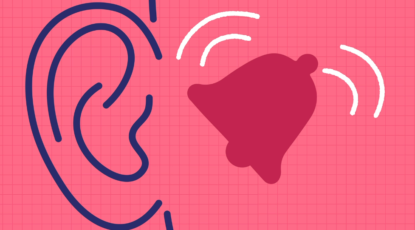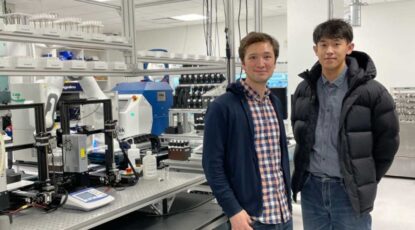Science and Technology
-
U-M-led Apple Hearing Study reveals prevalence of tinnitus
About 78% of participants in the Apple Hearing Study, conducted by researchers at U-M, have experienced tinnitus — the perception of sound that others do not hear. The study focused on the demographics and characteristics of people with tinnitus to inform future research on potential treatments.
-
Most local officials support rooftop solar, a majority opposes nuclear power
Michigan’s local leaders overwhelmingly support adding rooftop solar infrastructure in their communities, while a majority strongly oppose developing nuclear power. According to the Michigan Public Policy Survey, 86% of local government leader respondents either strongly or somewhat support adding rooftop solar panels.
-
AI chips could get a sense of time
Timekeeping in the brain is done with neurons that relax at different rates after receiving a signal; now memristors—hardware analogues of neurons—can do that too. Artificial neural networks may soon be able to process time-dependent information, such as audio and video data, more efficiently.
-
Managing screen time by making phones slightly more annoying to use
The best way to help smartphone users manage their screen time may be to make phones progressively more annoying to use, according to new U-M research. Delaying a phone’s swiping and tapping functions forces users to think harder, making it easier for them to consider whether to keep scrolling.
-
Researchers create human aortic aneurysm model
Using human cells in laboratory rats, Michigan Medicine researchers have developed a functional model of thoracic aortic aneurysm, creating new opportunities for understanding disease development and treatment. No treatments currently exist for the condition, which is a weakening and bulging at the body’s largest blood vessel in the chest.
-
Better battery manufacturing: Robotic lab vets new reaction design strategy
New chemistries for batteries, semiconductors, and more could be easier to manufacture, thanks to a new approach to making chemically complex materials that researchers at U-M and Samsung’s Advanced Materials Lab have demonstrated.
-
First atlas of the human ovary with cell-level resolution is a step toward artificial ovary
Insights could lead to treatments restoring ovarian hormone production and the ability to have biologically related children, according to U-M engineers. Researchers could potentially create artificial ovaries using tissues that were stored and frozen before exposure to toxic medical treatments such as chemotherapy and radiation.
-
The most precise measurement of our expanding universe
With 5,000 tiny robots in a mountaintop telescope, researchers can look 11 billion years into the past. Now, using the largest 3D map of our cosmos ever constructed, the Dark Energy Spectroscopic Instrument reveals the most precise measurements to date of how fast the universe has expanded throughout its history.
-
U-M astronomers conduct first search for forming planets with new space telescope
Planets form in disks of dust and gas called protoplanetary disks that whirl around a central protostar during its final assembly. While such disks have been imaged, just two planets have been caught in the act of forming so far. Astronomers are now aiming the James Webb Space Telescope at protoplanetary disks to find clues about the ways in which planets form, and how they influence their natal disk.










